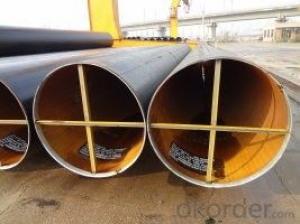Steel rebar, also known as reinforcing steel bars, plays a crucial role in the construction industry. It’s the backbone of many structures, providing strength and stability. But did you know there’s more to steel rebar than just being strong? The size of the rebar matters a lot in determining its application and effectiveness. Let’s dive into the world of steel rebar and explore the various sizes available and their specific uses.
The Importance of Rebar Sizes
Rebar comes in a variety of sizes, each designed for a particular purpose. The size of the rebar affects its strength, flexibility, and how well it can be incorporated into a structure. It’s not just about picking the biggest or the strongest; it’s about choosing the right size for the right job.
Common Rebar Sizes and Their Uses
When you walk into a construction site or a hardware store, you’ll find rebar in different shapes and sizes. Here are some of the most common ones:
– 3 Rebar: This is the smallest standard size, often used for minor reinforcements in concrete slabs and walls.
– 4 Rebar: A step up from 3, it’s used for residential construction, particularly in concrete footings and foundation walls.
– 5 Rebar: With a larger diameter, it’s suitable for commercial and industrial projects, including beams, columns, and floor slabs.
– 6 Rebar: This size is ideal for heavy-duty applications, such as bridges and large buildings, where extra strength is required.
– 7 Rebar: The largest standard size, it’s reserved for the most demanding projects, like high-rise buildings and heavy infrastructure.
Factors Influencing Rebar Size Selection
Choosing the right rebar size isn’t just about picking the one that looks good on paper. Several factors come into play:
– Load Requirements: The weight and stress the structure will endure dictate the size of the rebar needed.
– Spacing: The space available between the rebar and the formwork influences the size selection.
– Concrete Cover: The thickness of the concrete covering the rebar affects its protection against corrosion and environmental factors.
– Durability: The longevity of the structure and the environment it’s in also play a role in rebar size selection.
The Role of Rebar in Different Structures
Let’s take a closer look at how rebar sizes are specifically used in various types of structures:
– Residential Buildings: For homes and small buildings, 3 and 4 rebar are commonly used for footings, foundation walls, and slabs.
– Commercial Buildings: 5 and 6 rebar sizes are more common here, used in beams, columns, and slabs to support the additional load.
– Industrial and Infrastructure Projects: Here, you’ll find 6 and 7 rebar sizes, especially in projects like bridges, dams, and large-scale buildings where the load is significantly higher.
The Future of Rebar Sizes
As construction techniques evolve, so do the rebar sizes and types. Innovations in materials and manufacturing processes are leading to the development of new rebar sizes that are stronger, more flexible, and better suited for specific applications.
The Human Side of Rebar
While rebar might seem like a cold, unfeeling material, it’s actually a testament to human ingenuity and creativity. The people behind the production and use of rebar are passionate about their work, striving to make our world stronger and more resilient.
Conclusion
Understanding the different steel rebar sizes and their applications is essential for anyone involved in construction. Whether you’re a contractor, an architect, or just someone curious about the world of construction, knowing your rebar can make a world of difference. So the next time you walk past a construction site, take a moment to appreciate the unsung hero of the project—the steel rebar.

